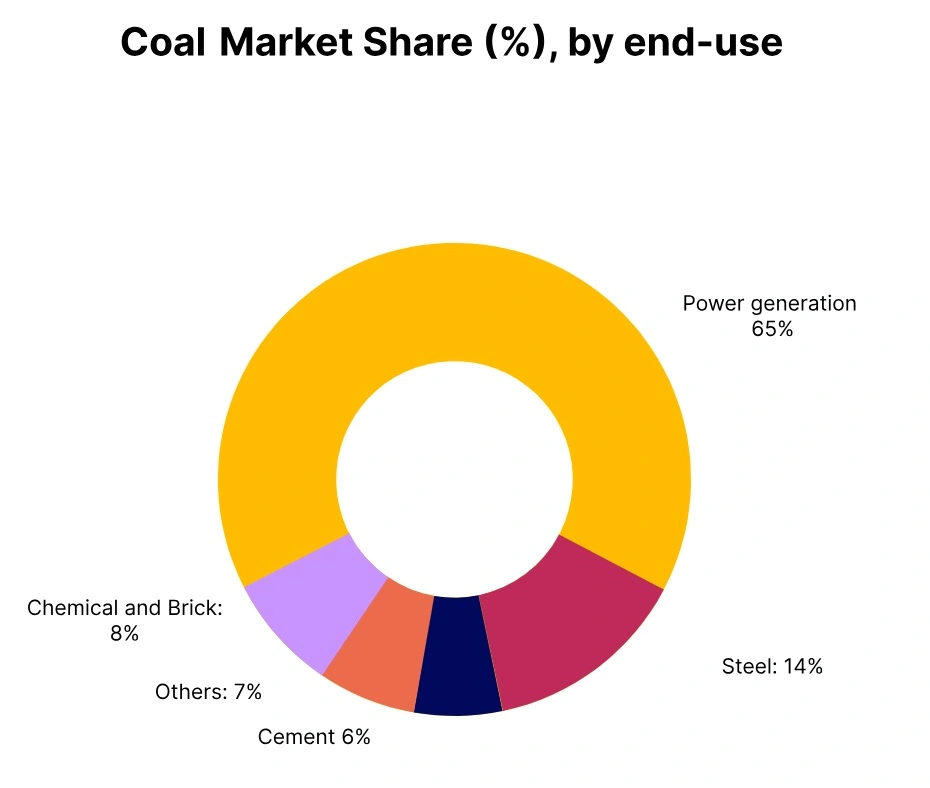Price-Watch’s most active coverage of Coal price assessment:
- Thermal Coal (RB1) FOB Richard Bay, South Africa
- Thermal Coal (RB2) FOB Richard Bay, South Africa
- Thermal Coal (4200 GAR) FOB Kalimantan, Indonesia
- Thermal Coal (3400 GAR) FOB Kalimantan, Indonesia
- Coking Coal (PCI) FOB Hay Point, Australia
- Coking Coal (PHCC) FOB Hay Point, Australia
- Met Coke (BF 25-90mm) EX East India, India
Coal Price Trend Q3 2025
In Q3 2025, the global coal market remained under considerable downward pressure due to oversupply, soft power generation demand, and subdued steel output in major economies. High-grade coals such as PCI and PHCC were relatively stable, benefiting from consistent industrial use, while thermal coals and coke witnessed steeper declines amid weak import activity. September saw minor recoveries across several segments as restocking and logistical adjustments tightened short-term supply, though sentiment stayed generally bearish heading into Q4 2025.
South Africa
Coal Export prices FOB Richards Bay, South Africa, Grade- RB1 Coal.
According to the PriceWatch, the price trend of Coal (RB1) in South Africa declined in Q3 2025, as export demand weakened due to softer buying from major Asian consumers amid stable global coal supply. Domestic generation demand remained steady but failed to offset international weakness. Shipping constraints and competitive lower-grade coal offers further pressured prices.
The oversupply situation in the seaborne market kept sentiment subdued throughout the quarter. However, Coal (RB1) prices in South Africa rose by 1.2% in September 2025, supported by short-term restocking from Asian buyers and slight tightening of freight availability, giving temporary relief from earlier declines.
Australia
Coal Export prices FOB Hay Point, Australia, Grade- PHCC.
The price trend of Coal (PHCC) in Australia edged down by 1.06% in Q3 2025, after significant earlier strength, as demand from steel mills in India and East Asia softened due to production cuts and stable metallurgical inventories. Despite robust fundamentals, cautious procurement behavior dominated as buyers waited for clearer signals on steel output.
Supply remained steady amid favorable mining conditions, containing any sharp price movements. However, Coal (PHCC) prices in Australia increased by 2.7% in September 2025, supported by renewed procurement from Indian and South Korean buyers ahead of Q4 production schedules, adding modest momentum to the market.
Indonesia
Coal Export prices FOB Kalimantan, Indonesia, Grade- 4200 GAR.
The coal price trend (4200 GAR) in Indonesia fell sharply by 10.58% in Q3 2025 on quarter-on-quarter basis, as abundant supply coupled with weaker demand from China and India weighed heavily on the market. Increased rainfall in mining regions raised production costs but also limited shipments temporarily, failing to offset the broader surplus.
Lower international LNG prices diverted some buyers away from coal-based energy sources. However, Coal (4200 GAR) prices in Indonesia rose by 3.2% in September 2025, supported by short-term cargo bookings from Southeast Asian utilities and improved vessel availability, which stabilized market sentiment slightly.
India
Coal Domestically Traded Prices Ex- east India, Grade- Met Coke.
According to the PriceWatch, the coal price trend (Met Coke) in India fell sharply by 8.64% in Q3 2025, pressured by sluggish demand from steel manufacturers and falling coking coal costs. Steel output reductions across major producing nations reduced coke offtake, leading to inventory accumulation at ports.
Export sales volumes saw marked declines, particularly to South and East Asian buyers. Ample availability kept prices thinly supported even as some producers cut output. Coal prices in India rose by 1.4% in September 2025, with short-term refill orders from steel mills offering brief reprieve to an otherwise soft global market.



